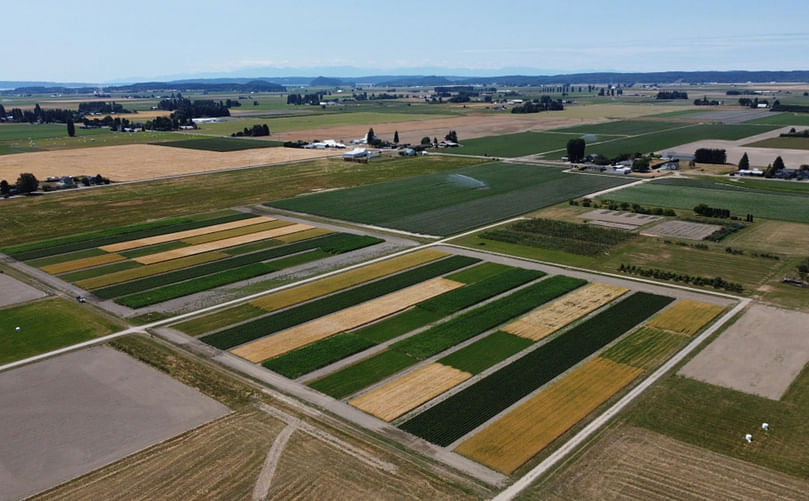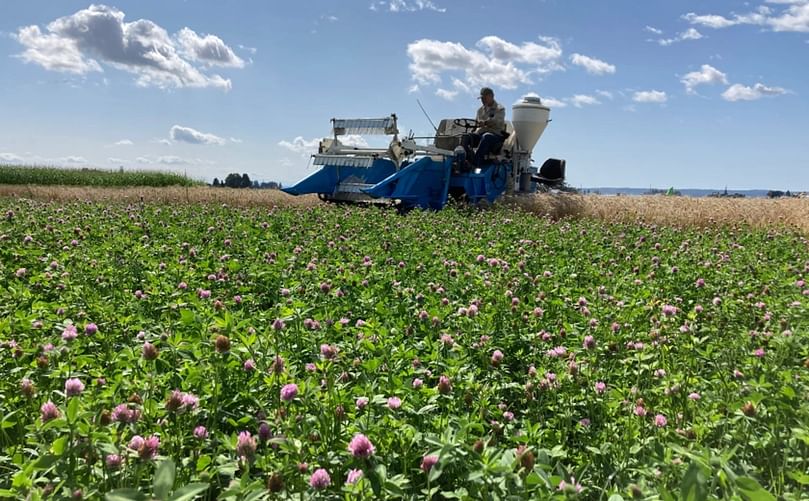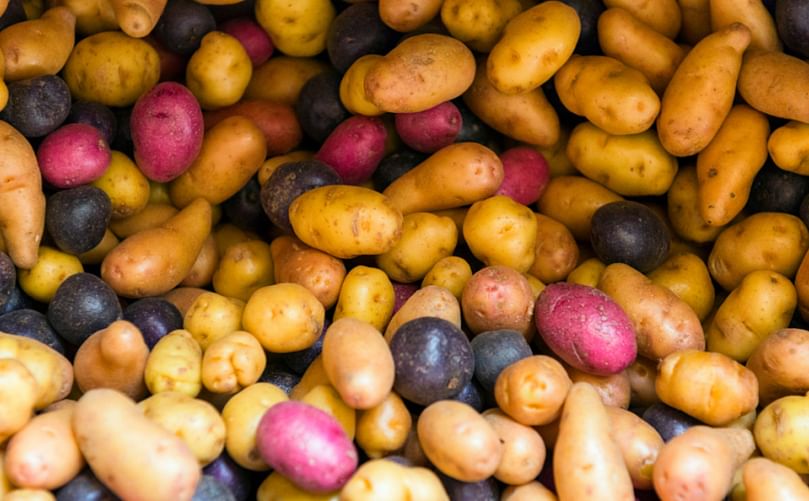Potato plants blooming in a field in northwestern Washington. Researchers are looking at ways to grow potatoes with less soil disturbance, which can improve soil health. (Courtesy: Deirdre Griffin LaHue)
How can we improve soil health in potato cropping systems?

Minimizing soil disturbance is one of the key tenets promoted to build soil health in agricultural systems. Many farmers across the country have adopted reduced and no-till systems to build soil carbon, a central component to healthy soils.
The Soil Science Society of America’s (SSSA) August 1st Soils Matter blog explores options to improve soil health for crops that grow underground – like potatoes.
According to soil scientist and blogger Deirdre Griffin-LaHue, in the US, overall, the potato industry was a USD 4 billion industry in 2020.
Americans will eat their potatoes fresh, frozen, fried, chipped, canned, and dehydrated. Potato products are also used as food ingredients, like potato starch.
Potatoes are a valuable crop in Washington state. It is the second leading producer of potatoes in the United States (after neighboring Idaho).
Central Washington grows Russet potatoes primarily for french fries and other processed potato products. Northwestern Washington is known for colorful, fresh-market potatoes.
The potato industry in Washington recognizes the importance of healthy soils for long-term, sustainable production of the crop. One issue with growing potatoes: they are a tuber crop, growing belowground.
Thus, planting and harvesting them disturbs the soil more than a crop like wheat or barley, which are harvested aboveground. Growers and researchers are working on strategies to promote soil health in this typically high disturbance system.

Aerial image of the long-term agricultural experiment to improve soil health in northwestern Washington’s potato-based cropping systems. The research team is looking at the feasibility and benefits of using cover crops to improve soil health. (Courtesy: Kwabena Sarpong)
The strategies represent the typical rotations and soils of the area. The trial is designed with methods that use changing levels of:
- soil disturbance (i.e., tillage),
- organic matter inputs,
- internal (cover crops and residues) and,
- external (compost).
This allows the team to study multiple soil health principles and how they interact with one another. Potatoes in northwestern Washington are typically grown in a particular field every 3-5 years.
Soil improvement strategies are really focused on what happens before and after the potato crop.

A three-year cover crop of a grass-clover mixture will be mowed periodically with no other disturbance. Farmers in Washington state typically grow potatoes every 3 to 5 years. (Courtesy: Deirdre Griffin LaHue)
Farmers in the area are using two methods. One is winter cover crops, planted in fall and terminated in spring.
The other is multi-year cover crops that are mowed and continuously provide organic carbon inputs to the soil.
Washington’s cold, wet fall and spring seasons can be a challenge to establishing winter cover crops. This is due to harvesting potatoes through October. But having cover crops between all other rotational crops may still benefit the soil.

Northwestern Washington is known for colorful, fresh-market potatoes. Growing potatoes in a cover cropping system may help the environment – and increase yields. (Courtesy: Canva Pro)
Minimizing soil disturbance between potato crops could improve soil health and future potato yields.
Ultimately, growers need to take a systems approach to improving soil health with potatoes and with any crop. It is not just about one crop. It’s about how the whole cropping system is managed over time.
By finding those intervention points to introduce a soil-building practice, growers can steadily improve soil health even with underground crops.








